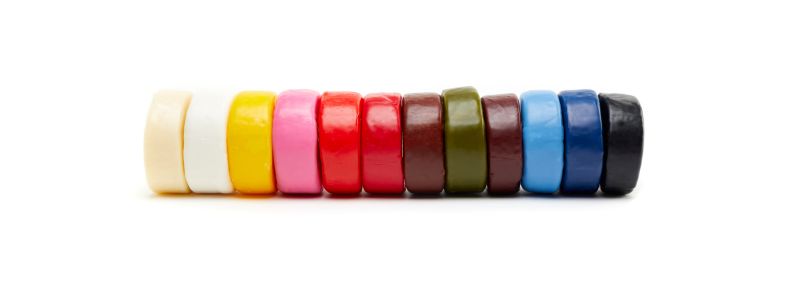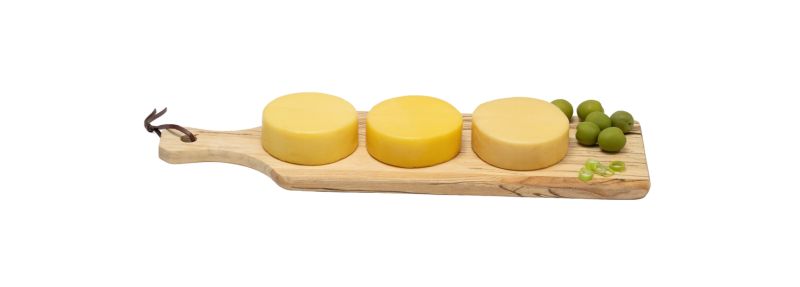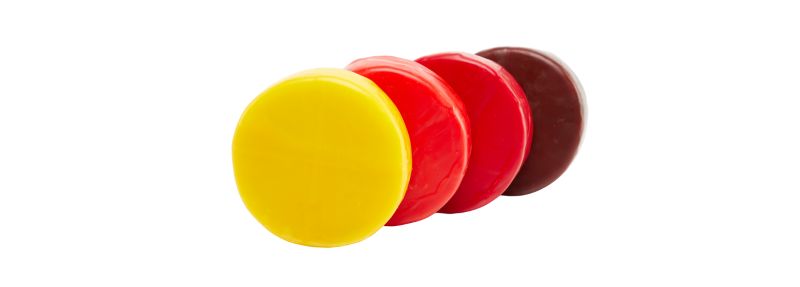Waxing cheese: A comprehensive guide

1. Introduction to waxing cheese
Waxing cheese is a traditional preservation method that dates back centuries. By applying a layer of wax to the surface of cheese, producers can create a barrier that protects the cheese during its maturation process. This technique not only extends the shelf life of the cheese but also allows it to develop its unique flavors and textures over time.
2. Benefits of waxing cheese
- Preservation of flavor and texture: Waxing helps maintain the cheese's moisture content, preventing it from drying out and ensuring that it retains its intended flavor profile and texture.
- Protection against mold and contaminants: The wax layer acts as a shield against external contaminants and mold growth, keeping the cheese safe and consumable.
- Extension of shelf life: By creating a controlled environment, waxing significantly extends the shelf life of cheese, making it suitable for long-term storage and transportation.
3. Types of cheese suitable for waxing
While many cheeses can benefit from waxing, it is particularly effective for:
- Hard cheeses: Varieties such as Cheddar and Gouda are ideal candidates for waxing due to their firm texture and aging requirements.
- Semi-hard cheeses: Cheeses like Edam and Manchego also respond well to waxing, allowing them to mature gracefully while being protected from external factors.
- Soft cheeses: Although less common, select soft cheeses can be waxed for short-term preservation or to create a unique presentation. Waxing helps protect their delicate surfaces during transport and can add a decorative finish with colored waxes. This approach is often used for specialty cheeses that require extra care or branding appeal.
4. Materials used in cheese waxing
Traditionally, cheese waxing has relied on waxes derived from the oil industry. These materials are carefully refined and converted into safe food contact substances. Although traditional waxes have been widely used for their availability and cost-effectiveness, there is an increasing demand for natural alternatives that support environmental goals.
- ProCera® traditional waxes: Procudan's traditional ProCera® range is produced from oil-based products, refined and converted to meet food contact standards. Importantly, no synthetic plastic polymers are added to these waxes; only raw materials derived from biological sources are used, ensuring the highest safety standards.
- Natural waxes: Responding to the growing demand for natural materials, Procudan offers ProCera® Natural, a 100% fossil-free cheese wax made entirely from natural ingredients including beeswax. This natural alternative provides the same protective and aesthetic benefits as traditional waxes, while supporting a more environmentally responsible approach to cheese production.
With options in both traditional and natural waxes, ProCera® offers solutions that align with a variety of production needs and sustainability goals.
5. Introduction to ProCera® cheese wax
Procudan’s ProCera® cheese wax is a leading solution for cheese preservation and branding. With a focus on innovation, ProCera® cheese wax ensures durability, safety, and sustainability, catering to diverse needs in the cheese industry. The product range includes:
- ProCera® Natural: A groundbreaking, 100% fossil-free cheese wax made from natural ingredients. Designed to meet the growing demand for eco-friendly food preservation, ProCera® Natural ensures the highest performance while minimizing environmental impact.
- ProCera® Basic: A versatile cheese wax with strong adhesion properties, ideal for protecting cheese during storage and maturation.
- ProCera® Finish: A clear, glossy wax used to prepare cheese for sale, enhancing its appearance and appeal.
- ProCera® Colour: This wax incorporates color pigments, enabling cheese producers to create distinctive and branded visual identities for their products.
Procudan’s ProCera® cheese wax line reflects a commitment to quality, sustainability, and innovation, making it a trusted choice for cheese producers worldwide.
6. ProCera® Natural: A new 100% fossil-free cheese wax
In response to the growing demand for sustainable food preservation solutions, Procudan developed ProCera® Natural— a 100% fossil-free cheese wax. This innovative product is made entirely from natural ingredients, including beeswax, offering an natural alternative to traditional waxes without compromising on performance. ProCera® Natural underscores Procudan’s dedication to creating products that align with the highest standards of quality.
7. Application Methods for Cheese Waxing
There are several methods for applying wax to cheese, depending on the scale of production and the desired finish:
- Dipping Method: This involves immersing the cheese into melted wax, ensuring an even and thorough waxing. It is highly efficient and is commonly used in commercial settings for consistent results.
- Brushing Method: In this method, melted wax is applied manually with a brush, making it ideal for smaller batches or production. It allows for precision and customization, especially for unique shapes or surfaces.
- Waterfall Method: This technique involves pouring melted wax over the cheese in a controlled stream, ensuring even coverage while minimizing waste. It is particularly effective in automated systems for high-volume production.
- Sprinkler Method: Using specialized equipment, melted wax is sprayed onto the cheese in fine droplets, creating a thin and uniform waxing. This method is suitable for delicate cheeses or when only a light layer of wax is required.
Each method has its advantages, allowing producers to choose the one that best suits their cheese type, production scale, and operational needs.
8. Step-by-Step guide to waxing cheese
To effectively wax cheese, follow these steps:
- Preparation of cheese: Ensure the cheese surface is clean and dry. Allow it to form a natural rind if necessary.
- Melting the wax: Heat the chosen ProCera® cheese wax in a boiler to the recommended temperature, depending on application.
- Applying the wax: Using chosen method, apply the wax evenly to cover the entire surface of the cheese.
- Cooling and storage: Allow the waxed cheese to cool and harden at room temperature or refrigerate directly. The cheese should be stored in a cool, dry place for aging.
9. Safety considerations in cheese waxing
When waxing cheese, it is essential to prioritize safety:
- Handling hot wax: Use appropriate equipment and protective gear to prevent burns.
- Ensuring food safety standards: Maintain cleanliness throughout the process to avoid contamination.
10. Frequently Asked Questions (FAQs)
- Can all cheeses be waxed?
While many cheeses can be waxed, it's most effective for hard and semi-hard varieties that require aging.
- How long does waxed cheese last?
Properly waxed cheese can last for months or even years, depending on the type of cheese and storage conditions.
- What temperatures are best for applying cheese wax?
Cheese wax should be melted to the application specific temperature.
- How does ProCera® Colour enhance branding?
ProCera® Colour allows cheese producers to incorporate distinctive colors into their products, creating strong visual identities that attract customers.
12. Conclusion
Cheese waxing is a critical process in preserving the flavor, texture, and quality of cheese. Procudan’s ProCera® cheese wax line, including the innovative ProCera® Natural, offers sustainable, high-performance solutions for cheese producers. Whether you are a small cheesemaker or a large-scale producer, adopting best practices and choosing quality materials like ProCera® cheese wax ensures your cheese stands out in taste, quality, and presentation.



